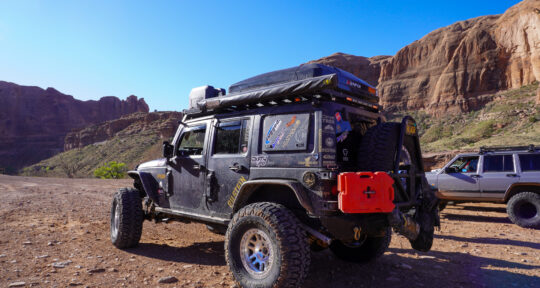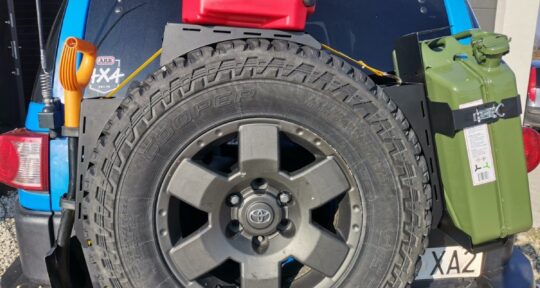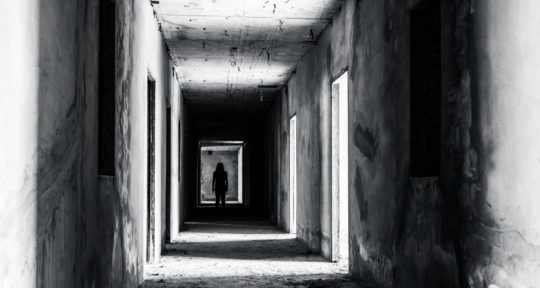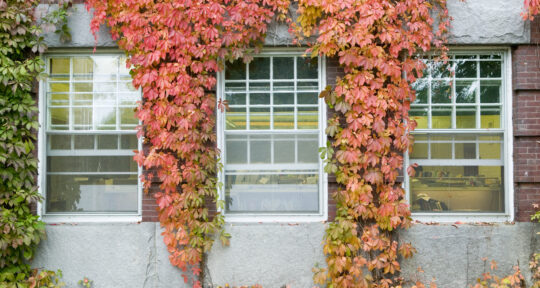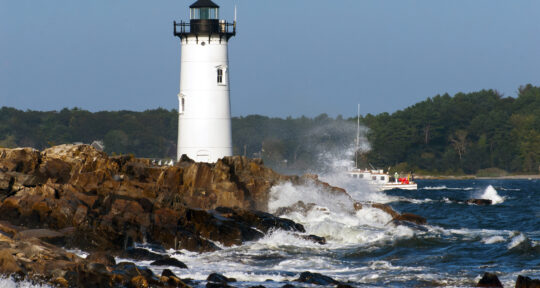Heading out on Tim Burke’s perfect motorcycle road trip? Here is some essential gear that will help you successfully complete the journey—items you’ll find on Tim’s bike and in his bag when he’s out traveling the world on two wheels.
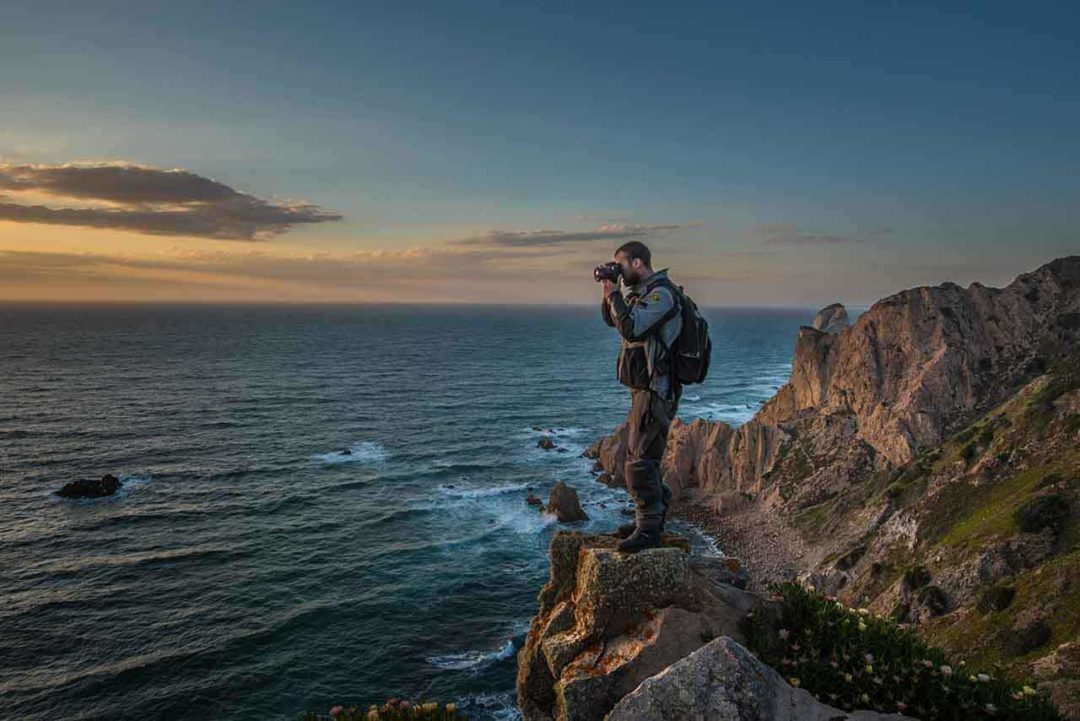
Camera Gear
Taking photos makes me happy. Sharing the journey through photography and motivating people to do the same makes me even happier. This is why I won’t travel without a camera.
Perhaps the most common question that I receive is related to camera gear. Now, I won’t get into a rant about why asking a photographer which camera they use is akin to asking a carpenter what kind of hammer they use or an artist what kind of paintbrush they use—but still, I’ll cover the basics.
Camera
I shoot with a severely abused Nikon D750. Why? Because I got a good deal on it via Craigslist. If I stumbled across a deal with a Canon, I’d shoot with a Canon. Based on my knowledge of photography, I’d expect the same quality results. I have a standard kit lens (24-120 mm) that is falling apart—it is literally held together with electrical tape and won’t zoom in or out anymore. I also have a wide-angle 20 mm (f-1.8) prime lens that I use for many landscape shots and night photography.
Whether you shoot Nikon, Canon, Fuji, Sony, Pentax, Olympus, or Panasonic, they are all capable of documenting your travels in a fantastic manner if you use them properly. Proper use comes from a combination of creativity and practice. So get out and practice.
Tripod
Similar to the camera’s manufacturer, the brand isn’t very important. The tripod’s sole function is to hold a camera steady for long-exposure photos—or timed selfies. Any sturdy tripod will work. I do recommend buying a tripod that allows you to quickly connect and disconnect your camera instead of having to screw the camera to the tripod each time.
Lens Filters
Generally, I don’t use filters because I find that they are just another surface that collects dust and debris. Some people like using UV filters which can change the color and contrast of the sky and water. Another option, for a creative touch, is a neutral density (ND) filter, which will reduce the amount of light that enters the lens. This allows for those “wispy” style waterfall pictures. I carry an ND8 filter with me.
Transporting the Camera
I use a padded plastic case with foam on the inside that can be molded to the shape of your setup. While the Pelican brand dominates the market, there are alternatives such as Seahorse, Member’s Mark, Monoprice, and IBEX cases. I use basic hardware to mount the case to the back of my motorcycle so that I always have access to my camera gear.
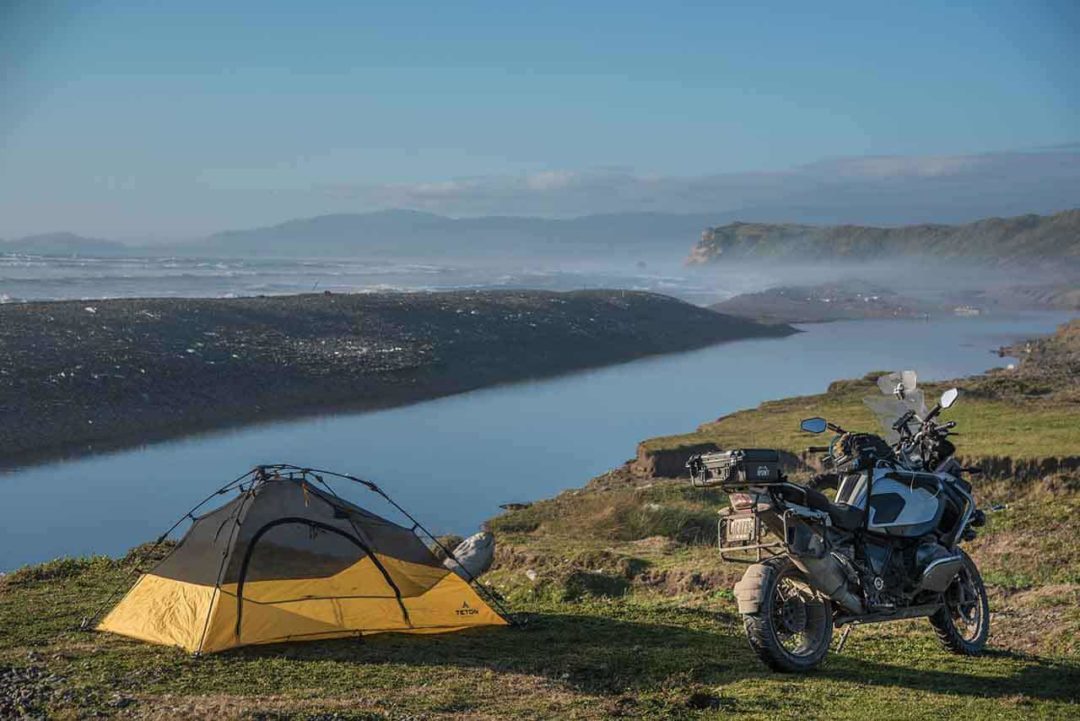
Teton Sports QuickTent XXL
I have very little patience for tent poles, tarps, and rain flies, especially in places like Norway or Alaska where mosquitos will eat you alive while you set up. A few years ago, I found the QuickTent made by Teton Sports in Utah. This tent pops up like one of those 3D children’s books. It will set up and break down in 30 seconds.
The downside to these tents is the size and weight. At 4.3 lbs, it’s considered heavy in the hiking community where both weight and size are a big deal. To me, on a motorcycle, 4.3 lbs is negligible and the convenience is worth its weight in gold.
The tent can be purchased online for less than $100.
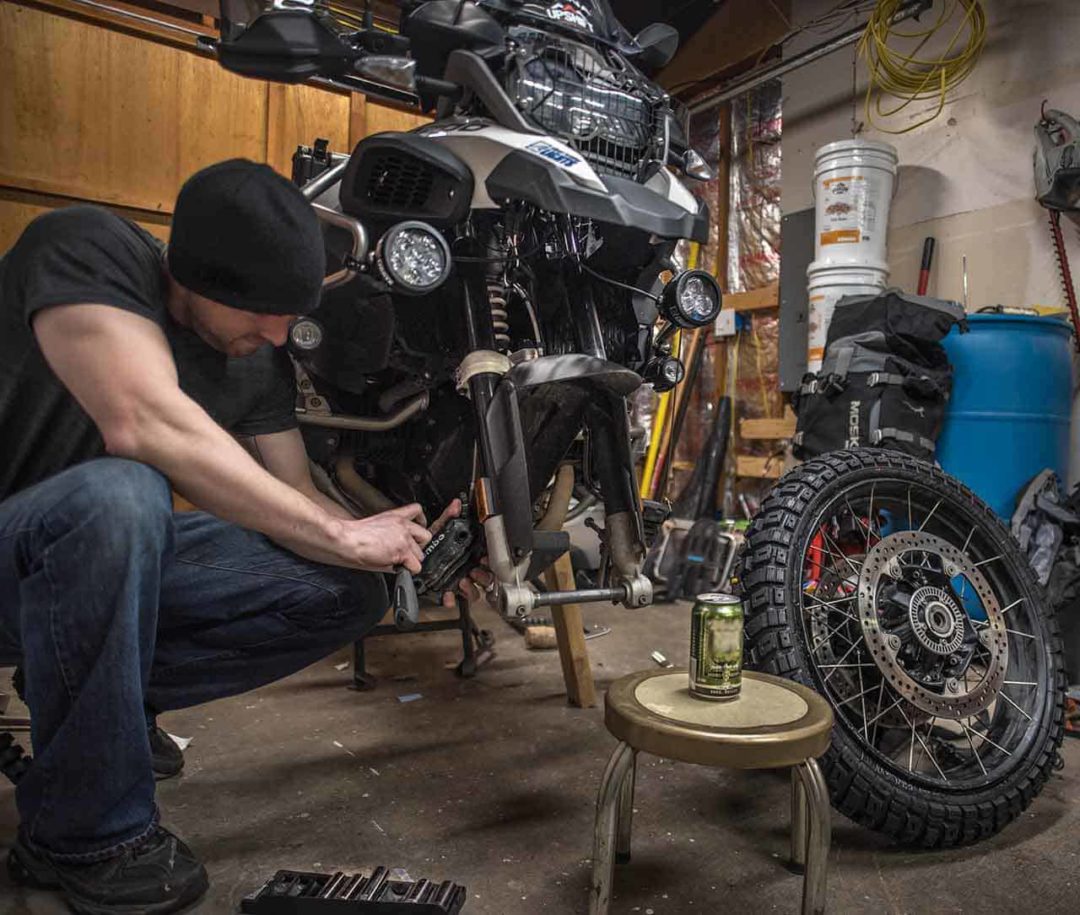
Tool Kit
I’ve heard people claim that if something can’t be fixed with duct tape or WD-40, it’s not worth fixing. While I find the sentiment funny, I refuse to leave home without the necessary tools to repair basic maintenance issues that may arise on the road.
The contents of my kit will be different than yours, depending on bike-specifics, but generally speaking, a lineup of appropriate-sized wrenches, sockets, and Allen keys will get you by. Also in my kit are pliers, wire cutters, a knife, a razor, electrical tape, zip ties, wire nuts, two part epoxy, and QuickSteel. If your motorcycle relies on fuses, I’d carry them. Also in the maintenance department is a tire repair kit (patches and plugs). I avoid Fix-a-Flat as it makes more of a mess than it’s worth.
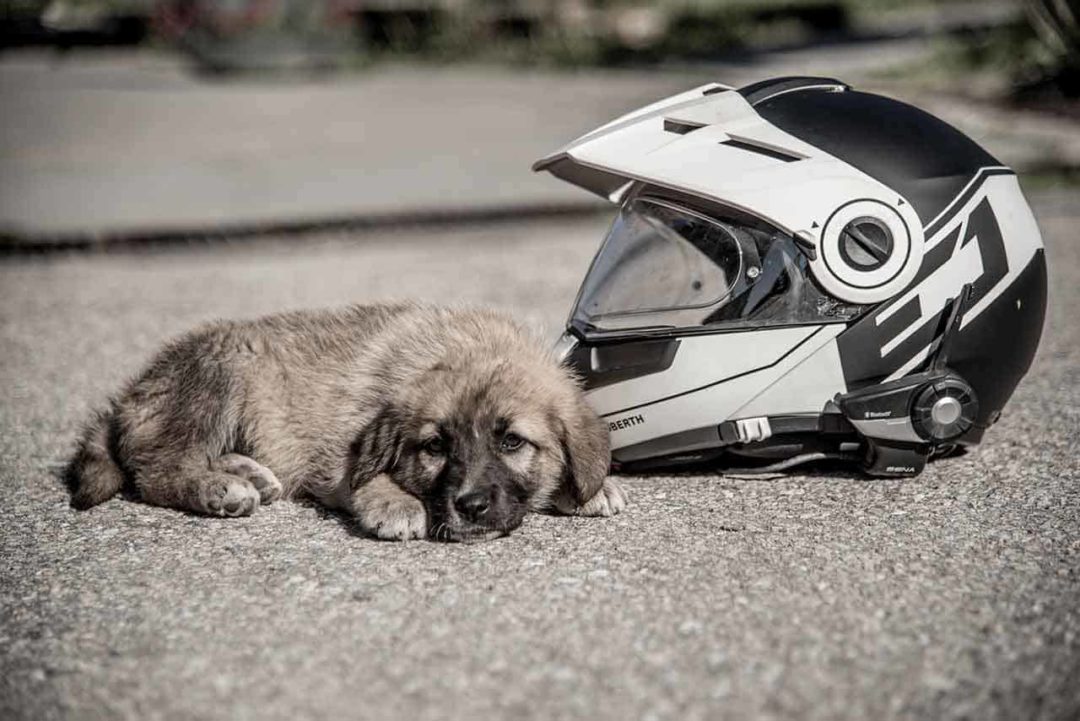
Modular Helmet
This is totally a preference item. I ride a motorcycle with a modular, or flip-up, helmet. Not everybody likes them but I just can’t live without it. It allows me to cool off when I’m parked in the summer heat while waiting for a traffic light to turn green. It also allows me to pull my camera up to my face for photography-on-the-go instead of having to take my helmet off each time I want to take a picture.
I use a Schuberth E1 helmet as I found that it’s the quietest in the industry.
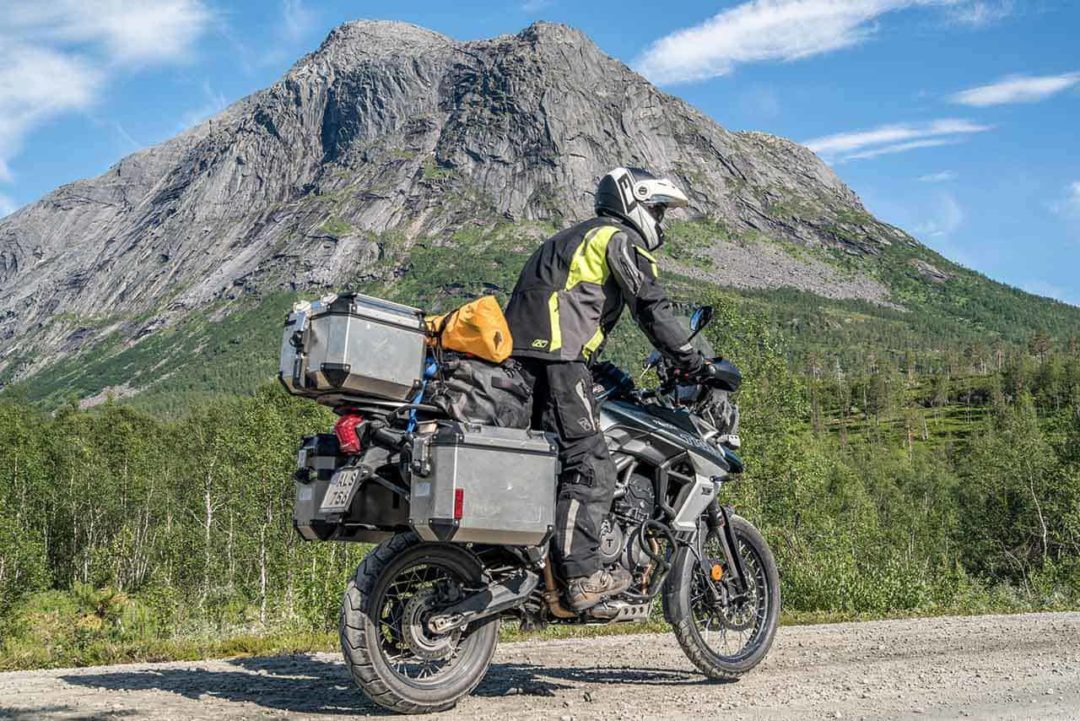
Klim Badlands Jacket and Pants
“There is no bad weather, only bad gear” sounds like a cliché, but there is some truth to it. There isn’t much in motorcycle traveling that’s more miserable and motivation-robbing than wet feet or a wet butt because your gear has the water resistance of a screen door.
If you plan on sitting on your motorcycle for days at a time and pushing through a variety of weather conditions to reach your destination, Goretex gear is the way to go. There are a few options on the market and I encourage you to shop for what suits you, but I have found that the level of protection, waterproofing, and warranty associated with Klim Gear is the best in the industry. For warmer climates, I utilize the Klim Carlsbad kit and for all-purpose, all-weather adventures, I use the Badlands kit.
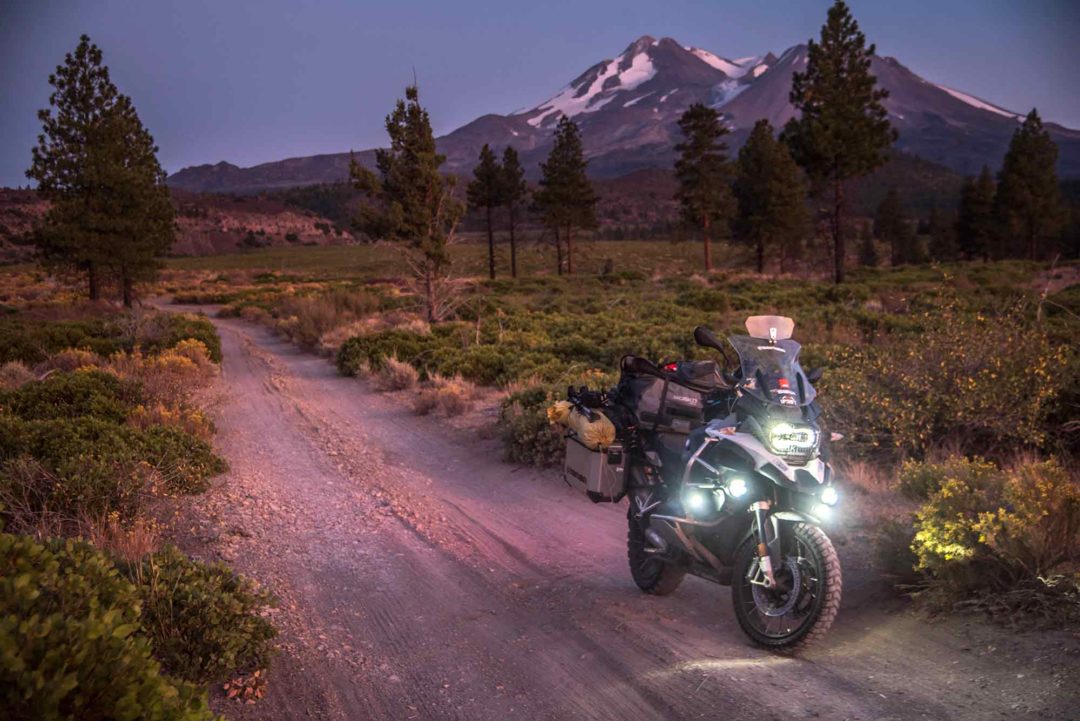
Auxiliary Lighting
Lighting is life. Lighting is safety. It’s absolutely essential for me to have additional lighting on my motorcycles, not only to project further down the road at night, but to be seen.
Running high-intensity LEDs will capture the attention of other motorists. There are a few different styles, from flood to beam patterns. I run a combination of the two. The floodlights do as the name suggests: Flood an area with illumination. It’s great for side-to-side light, lighting up a trail or an alleyway. Flood patterns do not project far down the road. A beam pattern is a long narrow projection of light that will illuminate the road for hundreds of meters ahead. Beam patterns generally do not light up the sides of the road.
There are many manufacturers that produce high quality, easy to install units. My favorites are the products from Clearwater Lights in California and Cyclops ADV out of Washington State. Take a gander at either company’s website to find which product will suit your motorcycle the best.
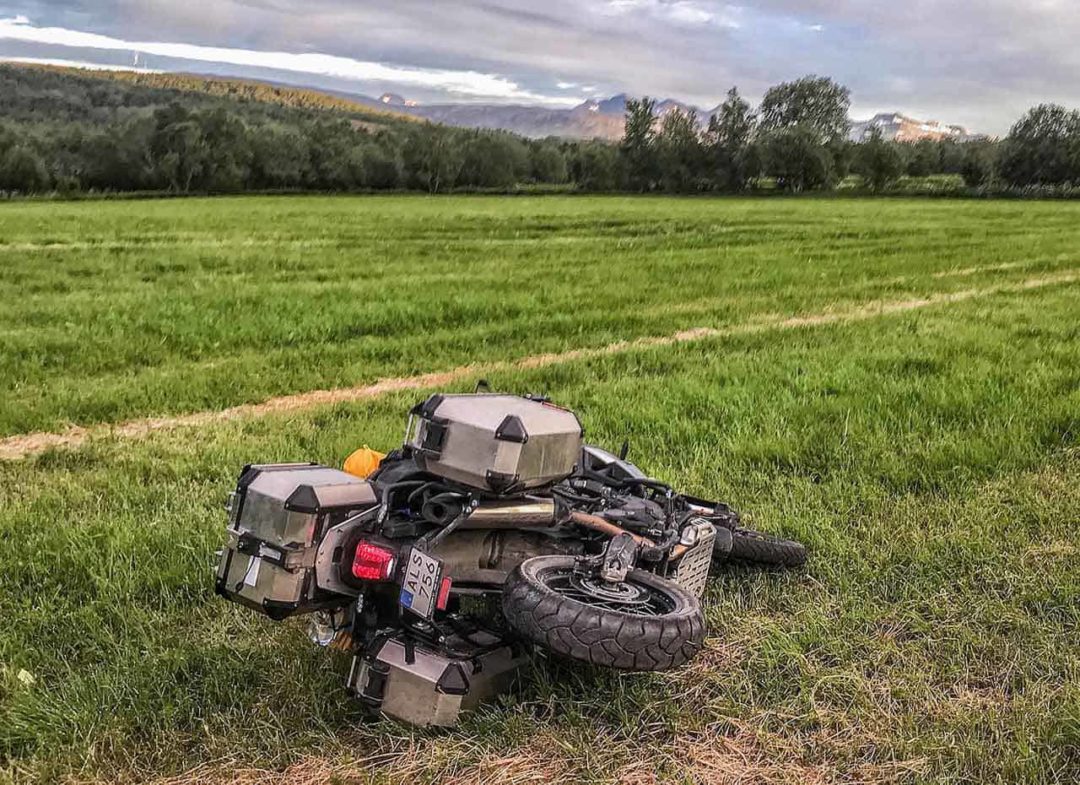
Side Stand Extension
This is probably one of the easiest and cheapest modifications that you can do to your motorcycle, but it makes it ten times easier than having to constantly find a stick or a rock to keep your bike upright on soft terrain. Once it’s installed, you’ll likely take this little modification for granted until you get on a motorcycle that doesn’t have one again.
The side stand extension allows me to put the bike anywhere I want it, even sand, at a moment’s notice when I’m ready to hop off for pictures.
Givi makes a number of these extensions, specific to many models of motorcycles. Check their website to see if you can find a fit.

